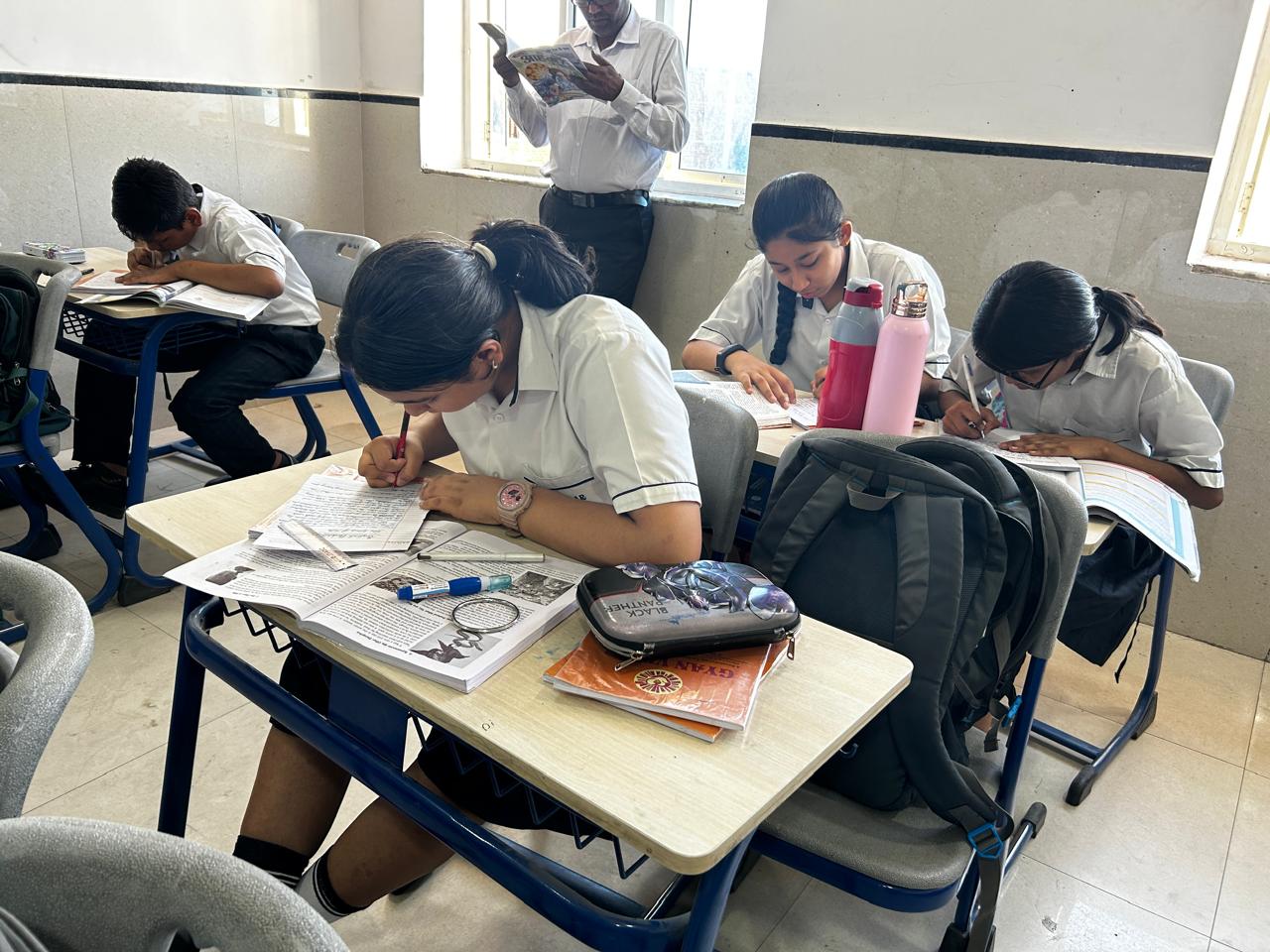Primary school to secondary school movement is a shift that needs to be observed closely. The best CBSE schools in Jaipur ensure that this change is as seamless as possible. This movement comes with new changes, challenges, and experiences that pupils have to cope with. Primary school students are guided by a lesson structure that encompasses basic content areas and social interaction within a nurturing environment. In secondary school, the structure breaks into a more complex level, which features different subjects with an increasing number of teachers and higher academic standards.
Students will find this change both exhilarating and daunting. They move from a classroom with one teacher to a multi-class structure where different instructors teach separate subjects. There will be more assignments to complete at home and more responsibility to shoulder. Parents have to accommodate the change, too, as children demand more freedom and independence as they grow. Let’s break down the key differences between primary and secondary school to better understand what this transition entails and how we can make it smoother for everyone involved.
Style of Instruction and Expectations
In primary school, the teaching approach is more supportive and care-centered. Each teacher makes sure that all students comprehend the provided materials through an understanding of the basics using storytelling, hands-on activities, and pictures. Errors are corrected and regarded as learning opportunities, and support is available at all times.
In secondary school, self-directed learning predominates and is more structured. Satisfactory progress is expected through student-initiated independent studying, on-time submission of tasks, and making use of critical judgment. The majority of lessons are conducted in the form of lectures, which require class participation, discussions, and even research work, with students using self-controlled reasoning skills.
Curriculum & Assessments
Students in primary school are taught the three core subjects of literacy, numeracy, and general knowledge. The word exam is not used more often, with teachers opting for a more continuous form of evaluation through methods such as quizzes, participation, and activities. It is important to ensure that children have a holistic base, which is why exhaustive evaluation is not favored.
Students in secondary school are exposed to further subjects like advanced math, science, languages, and humanities. Unlike primary school, assessment in secondary school is structured and exam-intensive. Some more standardized tests and finals affect grades. Students need to learn critical thinking concepts, problem-solving techniques, and how to deal with exams to excel in competitive surroundings.
Homework & Assignments
In primary school, assigned homework is kept minimal, along with varied and focused elements aimed at encouraging lessons that were taught in class. Students are often given simple worksheets, reading tasks, or projects centered around drawing or telling a story. Creating a fun environment is far more beneficial to children learning concepts without the pressure of stress. To ensure that children don’t feel burdened, parents and teachers pay more attention to guaranteeing that the concepts being taught are understood and worked on.
Students in secondary school are required to do considerably more work. Homework now includes writing-based projects, research work, complex problems, and other subject-driven tasks.
At Gyan Vihar School, one of the best schools in Malviya Nagar, Jaipur, we design our curriculum to match the learning needs of students across different grades. For primary classes, we focus on creating a fun and engaging environment where children can grasp concepts without feeling pressured. Our approach ensures that learning is enjoyable, helping students build a strong foundation with the support of both parents and teachers.
For secondary classes, the homework structure evolves to include writing-based projects, research work, complex problem-solving, and subject-focused tasks. This prepares students for advanced learning while fostering critical thinking and independent study skills.
Extracurricular Activities & Sports
Primary school is centered on learning using a child’s natural inclination to play. In this way, singing, dancing, art, and even basic sports are designed to appeal to the child’s imagination and foster physical activity. Competition is friendly, and taking part in match tournaments helps in the building of confidence and enhanced teamwork abilities.
The secondary school has more defined extra activities, including competitive sporting disciplines, organizing debating societies, attending science fairs, and competitive student council elections. At this level, students work towards some objectives and goals with a clearly defined area of interest, e.g., talent scouting, developing leadership skills, and building a good profile for their post-school career. Participation becomes more targeted as students aim to compete at inter-school, state, or even national levels.
Conclusion
Secondary school exposes kids to more independent study, topic specialization, and greater responsibility, whereas elementary school provides a supportive and supervised learning environment. Secondary school’s increased emphasis on extracurricular activities, more organized tests, and larger class sizes all help pupils mature and get ready for college.
At Gyan Vihar School, we know that growing up comes with big changes, and we’re here to make that journey smoother. With the right mix of support and independence, parents play a huge role in helping kids adapt. When we understand these transitions, we can ease their worries and set them up for success not just in school but in life.







